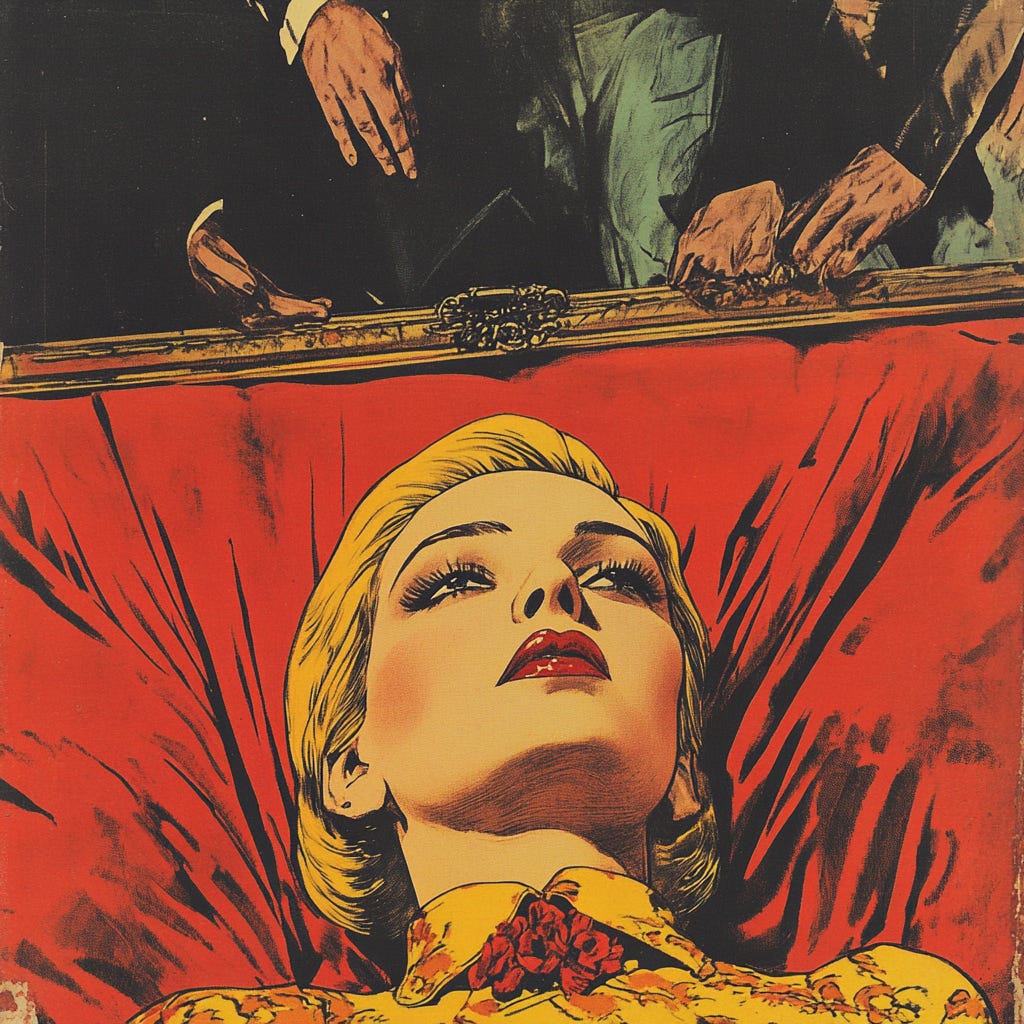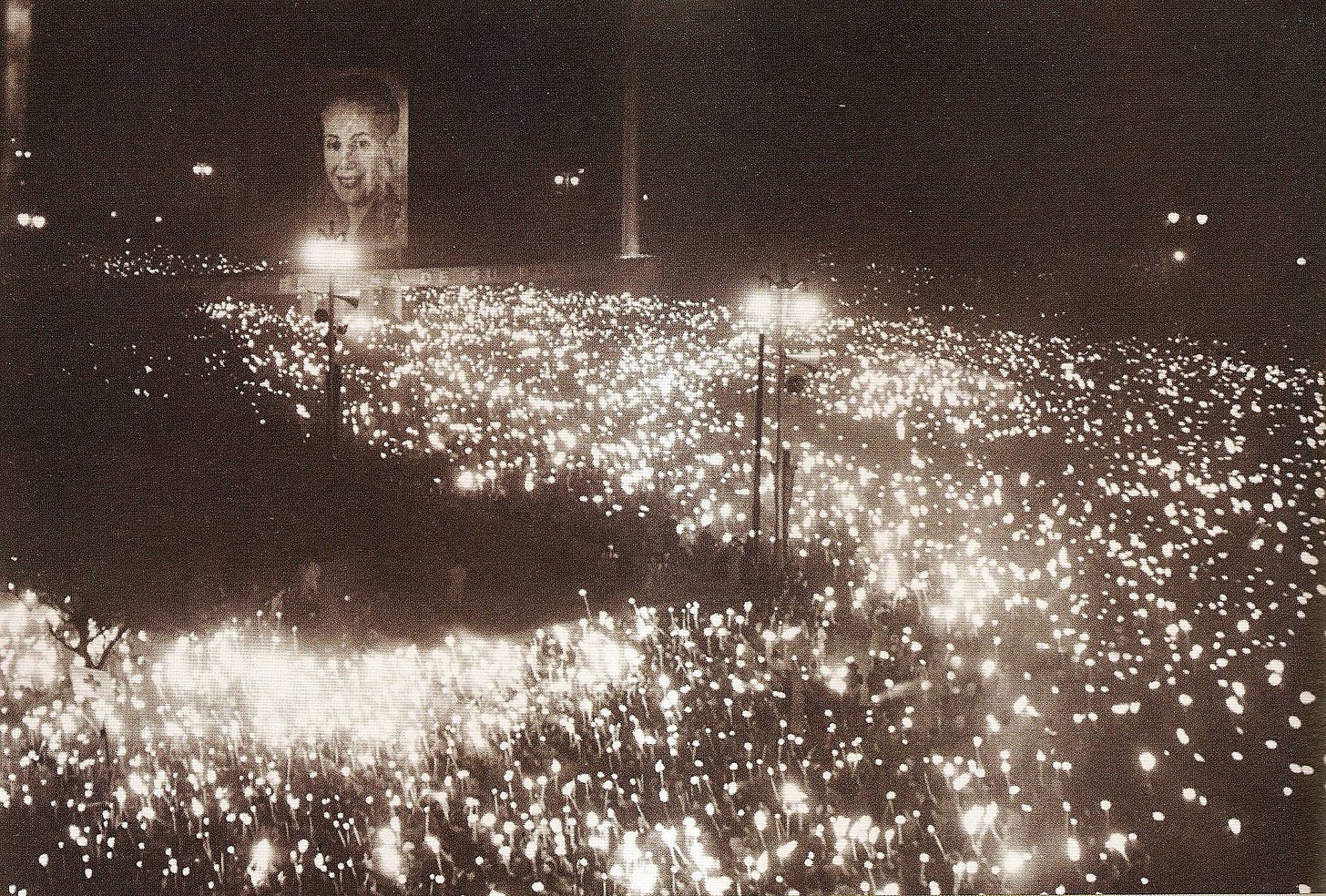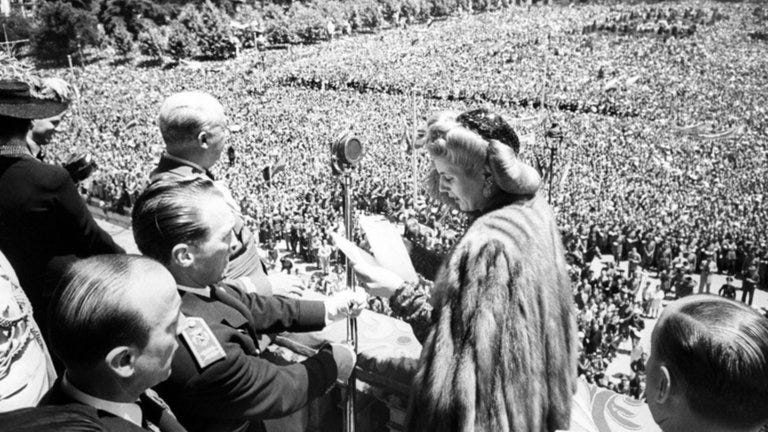The Mummification of Evita
A Macabre Tale of How a Corpse Turned Peronism into the Proletariat's Gothic Fantasy
In July 1952, Buenos Aires transformed into an open-air cathedral of magnificent grief. Outside the Casa Rosada, Argentina's pink presidential palace, thousands of Argentinians stood in rain-soaked vigils, clutching rosaries and photographs, their collective prayers forming a desperate chorus for a woman dying inside. Eva Perón—just 33 years old—was losing her battle with cancer, her once robust frame now a skeletal 75 pounds, her iconic blonde hair falling out in clumps from radiation treatments.
Radio stations broadcast nothing but sad classical music and prayer requests. Theaters closed. Newspapers published in black borders. A nation held its breath while the woman who had called herself "the bridge between Perón and the people" prepared for her final crossing.
On July 26, the announcement came: "It is our sad duty to inform the people of the Republic that Eva Perón, Spiritual Leader of the Nation, entered immortality at 8:25 pm" The façade of professionalism on state radio dissolved as the announcer broke down mid-sentence. Argentina's poor, her beloved descamisados, literally "the shirtless ones," (which, side note, what a fire name for a political movement) collapsed in the streets, their grief a physical force that would have impressed even the most jaded, dopamine-fried political strategist.
What followed was perhaps the most extravagant collective mourning ritual of the 20th century, a funeral so extra it makes Princess Diana's look like a casual Irish wake. Her body lay in state for 13 days while over 3 million people filed past in lines stretching for miles, many having traveled from the furthest provinces on foot. Eight people were crushed to death in the crowds. Thousands were injured. Florists sold out of stock nationwide. The streets of Buenos Aires literally flooded with flowers, forming fragrant rivers of mourning. This woman had main character energy even in death.
This was no ordinary death. And what happened next was no ordinary afterlife.
Wait, but doesn’t everyone already know the story of Eva Peron?
While the masses know Eva's story through Madonna's Evita, the musical that did for Argentine history what Warhol did for soup cans — that neoliberal fever dream ends at her death. But her saga after death is far more shocking than her life. The biopic ends precisely where the real ontological horror begins. What followed Eva's state funeral was political theater so sublimely perverse that even Slavoj Žižek would struggle to theorize it without reaching for a tissue. Madonna delivered melodrama; Argentina delivered psychological terror.
And that’s the story I’m going to tell you today.
Keep reading with a 7-day free trial
Subscribe to THE HEGELIAN DISPATCH to keep reading this post and get 7 days of free access to the full post archives.





